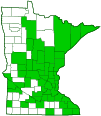black locust
(Robinia pseudoacacia)
Conservation • Weed • Wetland • Description • Habitat • Ecology • Use • Distribution • Taxonomy
Description |
||
Black locust is a medium-sized, fast-growing, short-lived, deciduous tree rising on a single trunk from a shallow, wide-spreading root system. It can be 30′ to 100′ in height and 12″ to 40″in diameter at breast height, though in Minnesota mature trees are usually no more than 60′ tall and 6″in diameter. It reproduces by seed and spreads aggressively by suckers. It often forms thickets. The trunk is often crooked. The crown is narrow, open, and irregular. The branches are spreading to ascending, short, crooked, and brittle. The bark on young trees is smooth and gray or brown. On mature trees the bark is gray or brown, thick, and separated into long, forking ridges and deep furrows. First-year twigs are light green and slightly hairy. Second-year twigs are slender, brittle, brown or reddish-brown, and hairless, with scattered lenticels. There is a pair of spines at each node. The spines are broad-based, sharp, and ½″ to 1″ long. The leaf scars are triangular to 3-lobed. They have 3 bundle scars and often 3 irregular cracks. There are no terminal buds. Lateral buds are tiny, hairy, and not easy to see. Clusters of 3 or more buds are concealed in the leaf scar beneath the base of the leaf. The leaves are alternate, deciduous, and 3″ to 8″ long. They are pinnately divided into 7 to 19 leaflets. They are on ⅜″ to 1⅜″ long, sparsely to moderately hairy leaf stalks. The leaflets are elliptical to oblong, ¾″to 2⅜″ long, and ⅜″ to 1 3 ⁄16″ wide. They are rounded at the base and rounded or blunt at the tip. The leaf tip is occasionally slightly notched and has a short, sharp, abrupt point. The upper surface is dark green, not shiny. The lower surface is pale green and is usually sparsely covered with short, appressed hairs. The margins are untoothed. The inflorescence is a drooping, unbranched cluster (raceme) rising from upper leaf axils of current-year branches. Each raceme is 2″ to 5″ long and has 8 to 30 flowers. Individual flowers are ¾″ to 1″ long and white. They are on on 3 ⁄16″ to ⅜″ long, hairy stalks. The 5 green, finely hairy sepals are fused for most of their length into a bell-shaped, ⅛″ to 5 ⁄16″ long tube (calyx), then separated into 5 shallow lobes. The 5 petals are butterfly-like, as is typical of plants in the Pea family. They are organized into a banner petal, two wing petals, and two fused keel petals. The banner is upright and bent backward along both sides. The wings are straight and project forward. The keel is curved upward. There are 10 stamens and a single style. The flowers are strongly scented. The fruit is a drooping, narrowly oblong, flat, hairless seedpod containing 2 to 10 seeds. It is 1 3 ⁄16″ to 4⅓″ long, ⅜″ to 1″ wide. It is green at first, turning brown as it ripens. The pod matures early August to early September. |
||
Height |
||
30′ to 60′ |
||
Record |
||
Records are not kept for nonnative species. |
||
Flower Color |
||
White |
||
Similar Species |
||
Habitat |
||
Moist. Forest borders and openings. Shade intolerant. |
||
Ecology |
||
Flowering |
||
Mid-May to mid-July |
||
Pests and Diseases |
||
|
||
Use |
||
|
||
Distribution |
||||
|
Sources |
|||
| 2/20/2023 | ||||
Nativity |
||||
Native to Pennsylvania, West Virginia, Illinois, Missouri, Oklahoma, Georgia, and Kentucky. Introduced and naturalized in Minnesota. |
||||
Occurrence |
||||
|
||||
Taxonomy |
|||
| Kingdom | Plantae (Plants) | ||
| Division | Tracheophyta (Vascular Plants) | ||
| Subdivision | Spermatophytina (Seed Plants) | ||
| Class | Magnoliopsida (Dicots) | ||
Order |
Fabales (Legumes, Milkworts, and Allies) | ||
Family |
Fabaceae (Legumes) | ||
| Subfamily | Faboideae | ||
| Tribe | Robinieae | ||
| Genus | Robinia (locust trees) | ||
Synonyms |
|||
Robinia pseudo-acacia Robinia pseudoacacia f. inermis Robinia pseudoacacia var. pyramidalis Robinia pseudoacacia var. rectissima |
|||
Common Names |
|||
black locust false acacia yellow locust |
|||
Glossary
Axil
The upper angle where a branch, stem, leaf stalk, or vein diverges.
Calyx
The group of outer floral leaves (sepals) below the petals, occasionally forming a tube.
Lenticel
A corky, round or stripe-like, usually raised, pore-like opening in bark that allows for gas exchange.
Pinnate
On a compound leaf, having the leaflets arranged on opposite sides of a common stalk. On a bryophyte, having branches evenly arranged on opposite sides of a stem.
Raceme
An unbranched, elongated inflorescence with stalked flowers. The flowers mature from the bottom up.
Sepal
An outer floral leaf, usually green but sometimes colored, at the base of a flower.
Sucker
A basal shoot rising from the roots or from a bud at the base of a shrub or tree.
Visitor Photos |
|||||
Share your photo of this plant. |
|||||
| This button not working for you? Simply email us at info@MinnesotaSeasons.com. Attach one or more photos and, if you like, a caption. |
|||||
Randy |
|||||
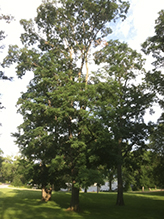 |
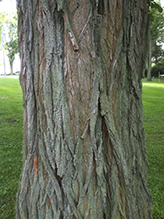 |
||||
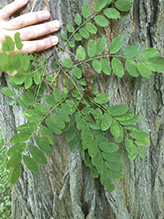 |
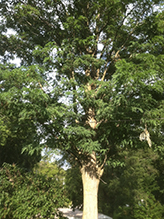 |
||||
MinnesotaSeasons.com Photos |
|||||
Plant |
|||||
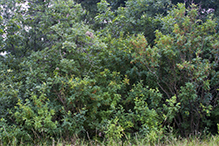 |
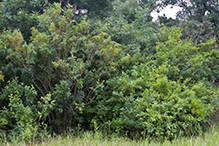 |
||||
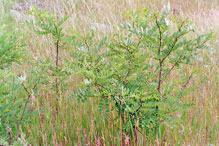 |
 |
||||
Leaves |
|||||
 |
 |
||||
Stem |
|||||
 |
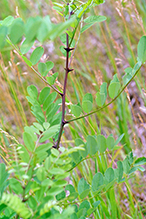 |
||||
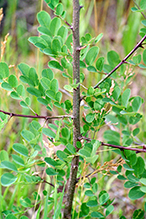 |
|||||
Infructescence |
|||||
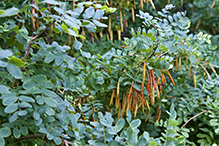 |
|||||
Fruit |
|||||
 |
|||||

Slideshows |
||
| Robinia pseudoacacia Blake C. Willson |
||
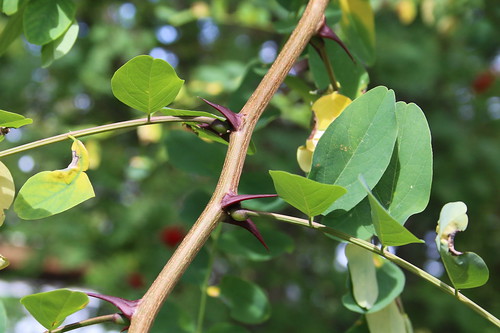
|
||
About
Black Locust |
||
| Black Locust DianesDigitals |
||
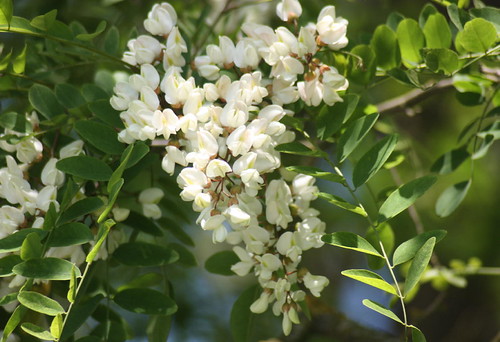
|
||
About
Copyright DianesDigitals |
||
| Robinia pseudoacacia - Black Locust Virens (Latin for greening) |
||
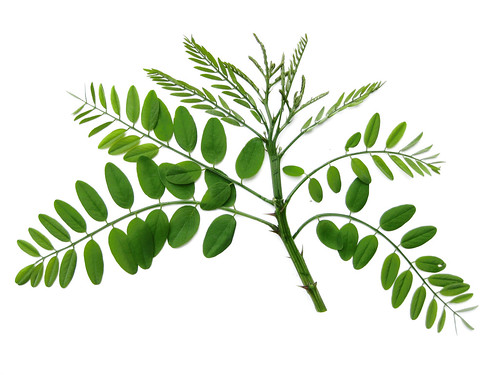
|
||
About
Leguminosae - Pea Family (alt. Fabaceae - Bean Family) ECOLOGICAL THREAT NATIVE RANGE Source: Plant Conservation Alliance, Alien Plant Working Group |
||
| Black Locust (Robinia pseudoacacia) Andree Reno Sanborn |
||
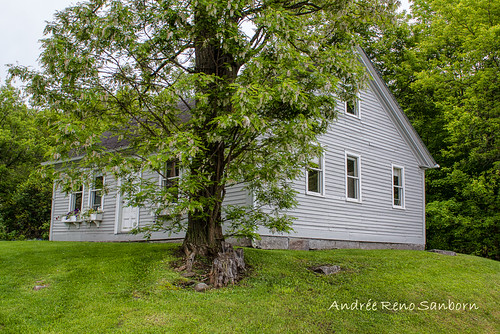
|
||
About
Prohibited in Massachusetts and Connecticut. |
||
| Black locust (Robinia pseudoacacia) Jim Hamilton |
||
About
Uploaded on Jun 18, 2008 Species information for black locust. |
||

Visitor Videos |
|||
Share your video of this plant. |
|||
| This button not working for you? Simply email us at info@MinnesotaSeasons.com. Attach a video, a YouTube link, or a cloud storage link. |
|||
Other Videos |
|||
| The Black Locust oneminuteenvironment |
|||
About
Uploaded on Jul 9, 2011 The Black Locust (Robinia pseudoacacia) ranks among the 40 worst invasive tree species in the world. In 1601 its first seeds were sent from the Americas to France. Since then it has made its way into gardens in Africa, Asia and Australia. Unfortunately it also spreads readily into the wild where it overgrows all native vegetation. Watch this related video on mail order invasions: http://www.youtube.com/user/oneminuteenvironment#p/c/DD15212D18439CD0/4/JRZKvSQOKqE |
|||
| Comparing toxic Black Locust pod and an edible Honey Locust pod zuditaka |
|||
About
Uploaded on Nov 21, 2011 Many people on YouTube, including some nursery owners (who should know better!), cannot tell the difference between a toxic Black Locust pod and an edible Honey Locust pod. Just a quick look, in the garden, today, at the difference between Black Locust pods and Honey Locust pods. You can see that the Black Locust pods are only tiny in comparison to the giant (brown-coloured) Honey Locust pods. There is also a leaf difference, too. The Gleditsias have smaller leaves and the Robineas have larger leaves. Disclaimer: |
|||
| Trees with Don Leopold - black locust ESFTV |
|||
About
Uploaded on Oct 21, 2011 No description available. |
|||
| Black Locust identification video wvoutdoorman |
|||
About
Published on Aug 6, 2012 Black Locust identification (Robinia Pseudoacacia). It is the tree for fence post because the wood last forever. |
|||
| Black Locust Tree (rev 5-11) ondeerpath |
|||
About
Uploaded on May 29, 2011 No description available. |
|||

Visitor Sightings |
|||||
Report a sighting of this plant. |
|||||
| This button not working for you? Simply email us at info@MinnesotaSeasons.com. Be sure to include a location. |
|||||
| Randy 7/19/2016 |
Location: Albert Lea, MN Black locust in Albert Lea |
 |
|||
MinnesotaSeasons.com Sightings |
|||||

|
Created: Last Updated: © MinnesotaSeasons.com. All rights reserved. |
